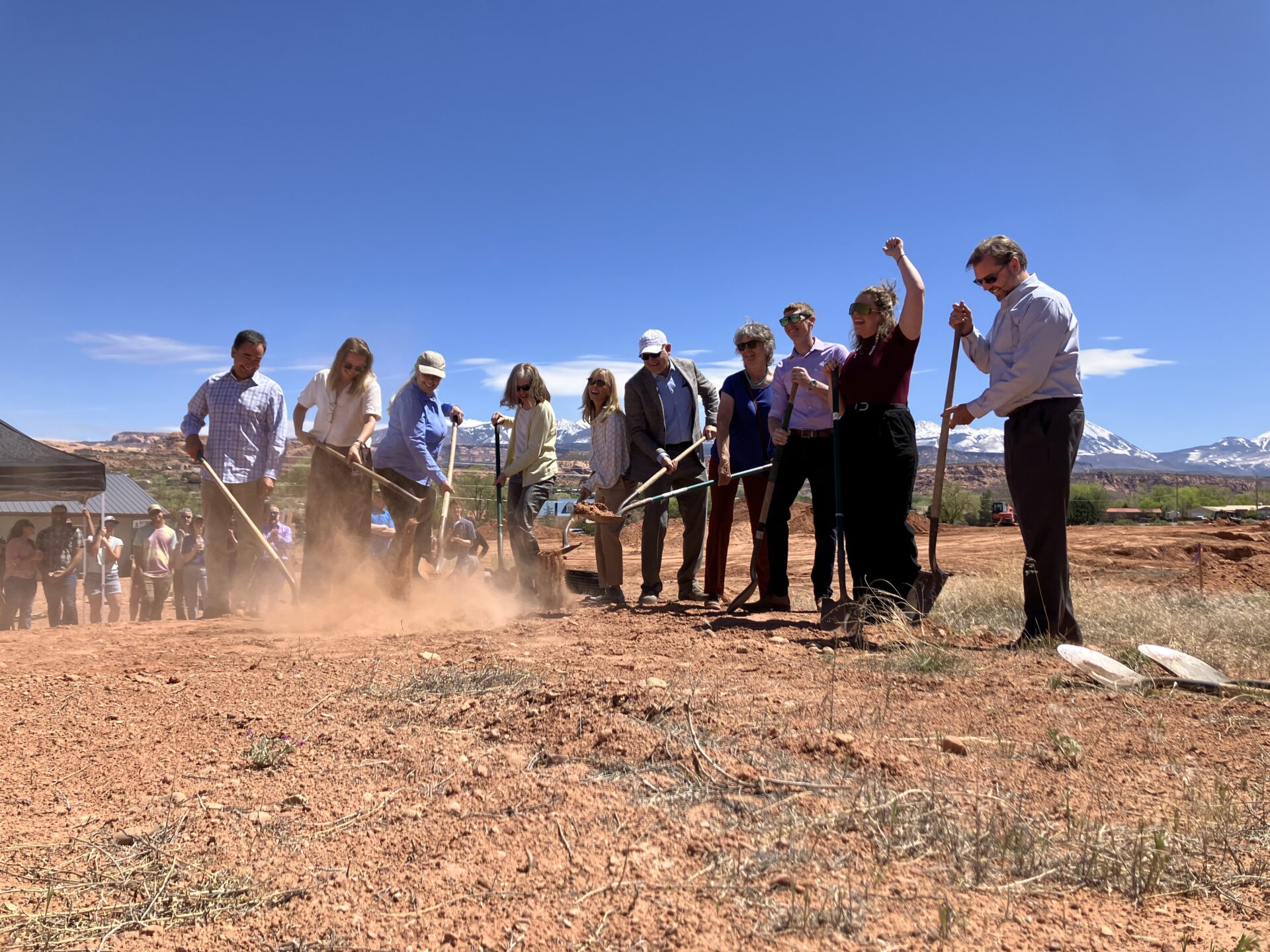Construction work is now under way on the City of Moab’s regional wastewater treatment plant, and officials in San Juan County approved a long-awaited infrastructure project last month that will ulimately tie new sewer lines into the city’s system.
The State of Utah regulates the number of wastewater treatment plants per area and allotted one facility for Grand County and the San Juan Spanish Valley Special Service District (SJSVSSD). As a result, the San Juan County sewer flows will be connected to the new plant for treatment, streaming through a connection of pipes from the San Juan County line and through the Moab City limits.
The project is the second main component of the $10 million SJSVSSD Culinary and Wastewater Project, which the district’s board members approved on April 20. However, district officials have their own plans for culinary water, according to Grand Water and Sewer Service Agency (GWSSA) General Manager Art Wollenweber.
“GWSSA’s involvement will be simply to make sure that our system has adequate carrying capacity for not only the first 230 connections, but future growth,” Wollenweber said. “The preliminary concept is to install a new collection line down the west side of Highway 191 to handle the (San Juan County) flows and also accommodate any future Utah State University development.”
The project may also affect zoning regulations in the San Juan Spanish Valley Special Service District. At present, lots in the area, which require septic systems, have a building requirement of one residential structure per one acre of land. Septic systems, which can potentially degrade groundwater quality, are regulated by the Utah Department of Health, and zoning regulations vary according to soil type and culinary water source.
According to information from Southeastern Utah District Health Department environmental health scientist Orion Rogers, the local health department may determine minimum lot size, with the option of involving other affected governmental entities and the division in making joint lot-size determinations.
Connectivity to a sewer system will also provide the opportunity for higher-density development, according to Moab City Council member Kyle Bailey.
“Better access to sewer equals more opportunity to develop,” Bailey said.
“Sewer lines increase the ability for the land to be developed and can also increase density in the area,” Bailey said. “Most of the land in San Juan County and the upper valley is owned by (Utah’s School and Institutional Trust Lands Administration, or SITLA) and it will benefit them by allowing them to develop it.”
SITLA Planning and Development Group Manager Troy Herold has noted that the trust currently manages more than 8,000 acres in the south end of the Spanish Valley. The bulk of that land – 5,200 acres – is in San Juan County.
However, the fact that the San Juan County properties in Spanish Valley can only be served right now by private water well and septic systems is a limiting factor to continued growth in the area, Herold said in an April 20 memo to SITLA’s board. It also affects SITLA’s ability to monetize its property at its highest and best use, he said, concluding that the agency should commit to a $2 million capital expenditure in support of the district’s project.
“This is a rare opportunity for the Trust to secure the water and sewer improvements for the Trust’s Spanish Valley property at a significantly reduced rate while assisting the community in a worthy project that will have a direct, positive impact on the value of Trust properties,” Herold said in the memo. “An additional benefit of participation in this infrastructure is that the Trust would be able to drive development in the Spanish Valley to Trust properties, similar to what has been accomplished in Washington County …”
According to Bailey, there has been an ongoing water study for three years, monitoring how much water comes into the system, including rainfall and snowpack in the La Sal Mountains, and how that recharges the aquifers. The Valley Fill Aquifer and Glen Canyon Aquifer are the Moab area’s main sources of culinary water. Findings from the studies of the recharge amount will help determine the maximum capabilities of the aquifers and a responsible course of action regarding new development in the area.
“Think of it like a bank,” Bailey said. “You don’t want to go into your savings. You try to regulate the amount of water going out of the system versus what is coming into the system. You want to have a reserve in your bank. You don’t want to reach into that reserve or you might permanently destroy that aquifer. There is a limited amount of water and recharge from the aquifers and that would be a limiting factor in terms of growth.”
The Culinary Water and Sewer Systems Project has a combined estimated cost of $10 million – 60 percent of which is set to come from grants – both state and federal. At Herold’s recommendation, SITLA has previously agreed to cover an additional 20 percent of costs. The public will be responsible for the remaining 20 percent, which is expected to materialize as approximately $85 per month in user fees.
That amount is separate from a $3,000 connectivity fee, which falls under the responsibility of the homeowner. Homeowners are not required to connect to the sewer line; however, they will still be required to pay the monthly user fee.
“It was the hand that we were dealt,” Bailey said. “Will it cost money? Yes. How much increase can we support? Is it a good thing? I don’t know. The purpose of this sewer plant is to prepare for growth. It’s important, though, we maintain the integrity of our water – pristine water – and not damage our water systems.”
$10 million project aims to guide future growth in northern San Juan County




